

Damion Smy
China bans Tesla-style door handles
1 Hour Ago
This unique EV streamliner isn't yet locked in for Australia, but it's on the local GWM radar. It'd be a unique addition to the local range.
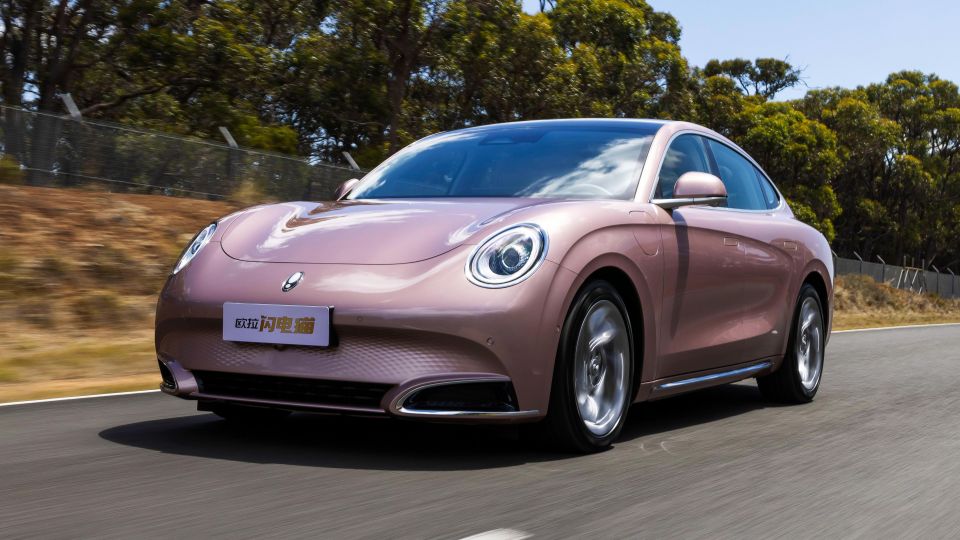
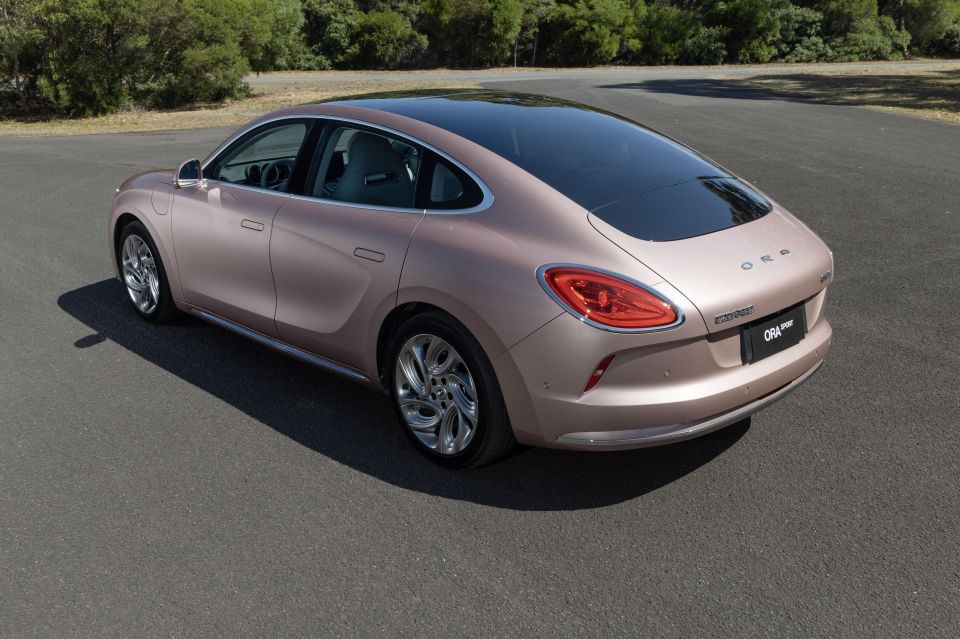

Contributor

Contributor


Contributor

Contributor
Where expert car reviews meet expert car buying – CarExpert gives you trusted advice, personalised service and real savings on your next new car.
No, this isn’t a shrunken Bugatti Galibier. It’s the GWM Ora Sport, and it’s not quite confirmed for Australia… yet.

With that said, GWM has gone to the effort of renaming the car – known as the Lightning Cat abroad – for our market, and even flew out a left-hand drive car for media to drive at the Australian Automotive Research Centre in Anglesea.
In other words, we’d be very surprised if this slinky electric streamliner wasn’t purring along Australian roads at some point in the near future.
Unlike the Ora hatch, which is currently the most affordable electric vehicle on offer in Australia, the Ora Sport aims at a slightly higher-end crowd. The fastest dual-motor model hits 100km/h in just over four seconds.
Pricing for the GWM Ora Sport hasn’t been locked in, given it’s not yet confirmed for Australia.
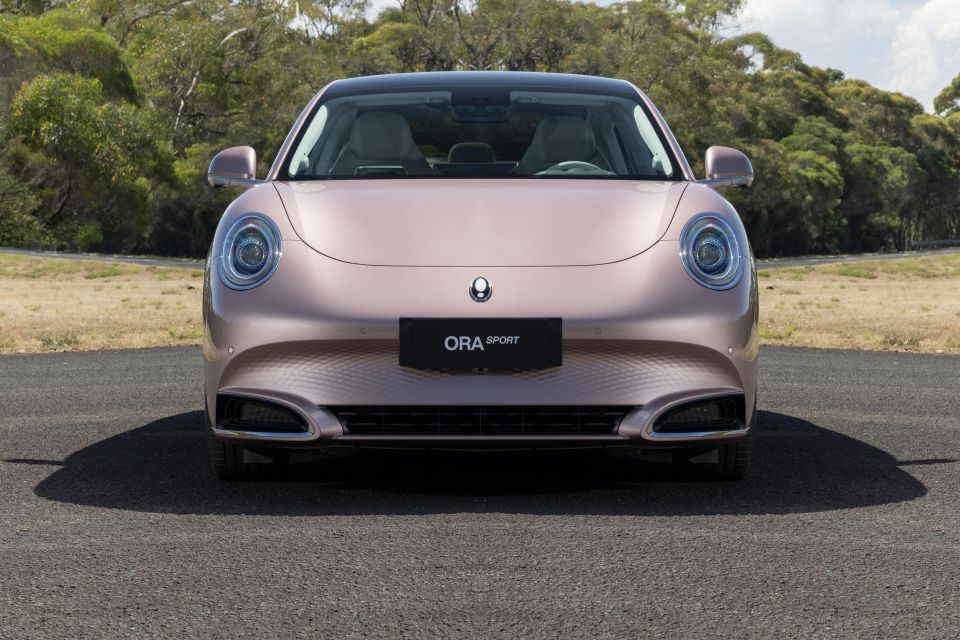
But GWM has made clear it plans to be aggressive with where it positions the Ora Sport, describing it as a potential “EV performance bargain” alongside the Tesla Model 3 and Polestar 2.
Pricing for the Ora hatch kicks off at ~$45,000 drive-away and extends to ~$56,000 drive-away. It’s likely the Ora Sport will sit above it on the pricing ladder.
The Tesla Model 3 kicks off at $63,400 before on-road costs, while the Polestar 2 kicks off in the mid-$60,000 range.
Buy your new car without the stress. It's fast, simple and completely free.

Great service from Travis and team, second time I have used this business would not hesitate to recommend them to anyone
Craig C.
Purchased a Ford Ranger in Sunshine Coast, QLD
CarExpert helped Craig save thousands on his Ford Ranger, now let us save you on your next new car.
Find a dealThe Ora Sport is every bit as dramatic inside as it is outside. With a floating centre console, big screen, and triple-dial housing around the digital instrument binnacle, it looks like nothing else on the market today – even the Ora hatch.
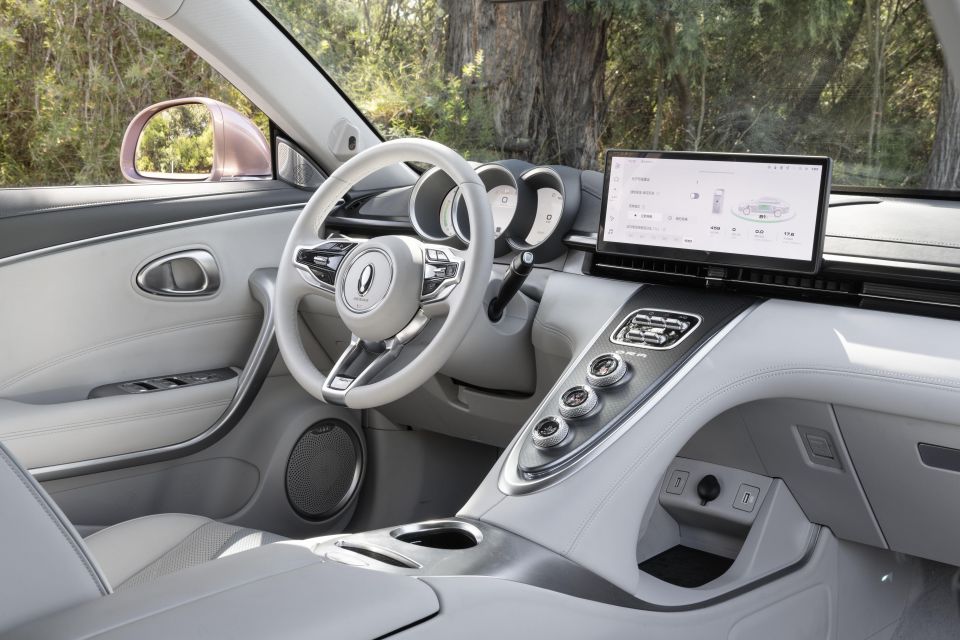
Based on our very quick drive, the cabin is actually a bit tighter than the Ora up front. The driving position on our left-hand drive tester had me sitting with legs more splayed than in the Ora, and the cabin feels quite narrow.
The seats are lovely, though, with sporty backrests and bolsters, and the steering wheel looks and feels high-end.
With Australian specifications still to be confirmed, it’s not clear whether the white leather of our tester will be standard, optional, or even available Down Under. With that said, the materials in our Chinese-specification car felt quite plush.
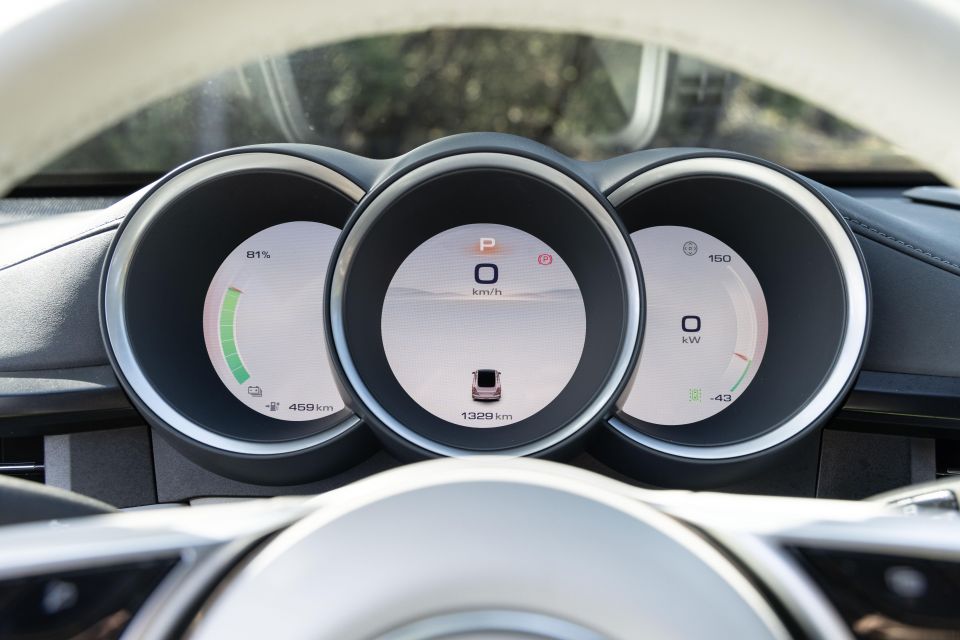
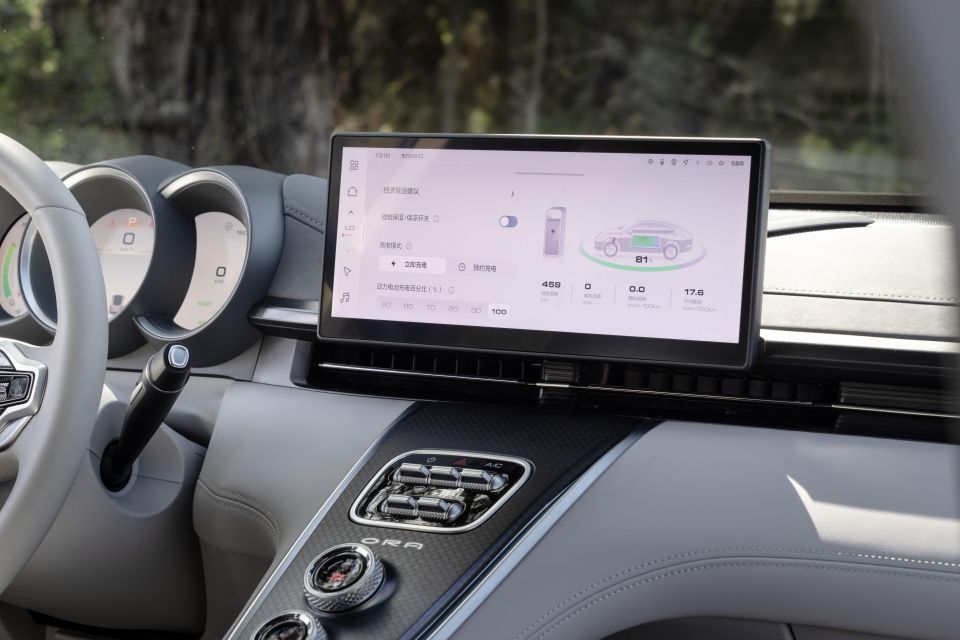
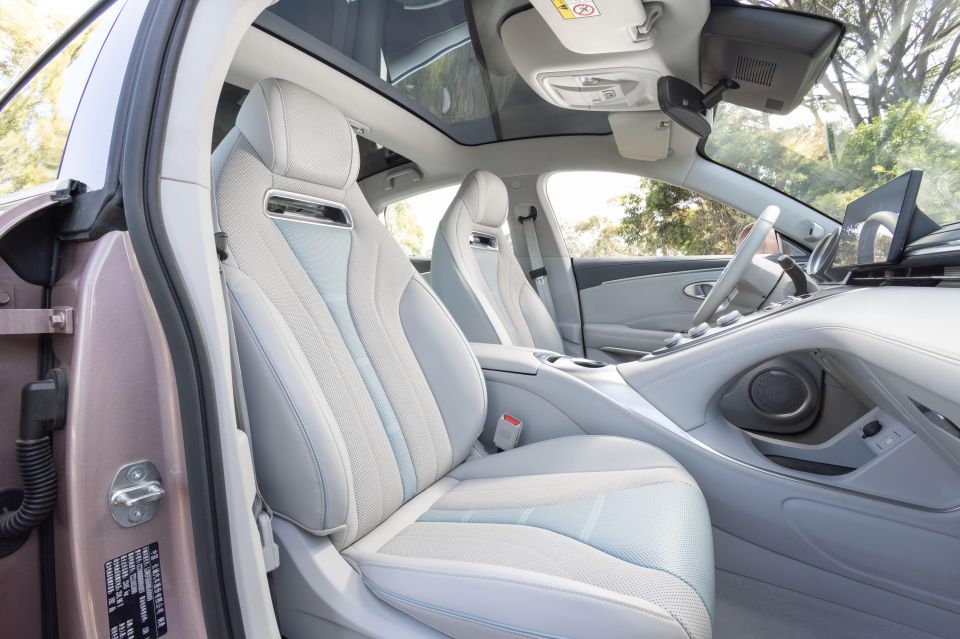
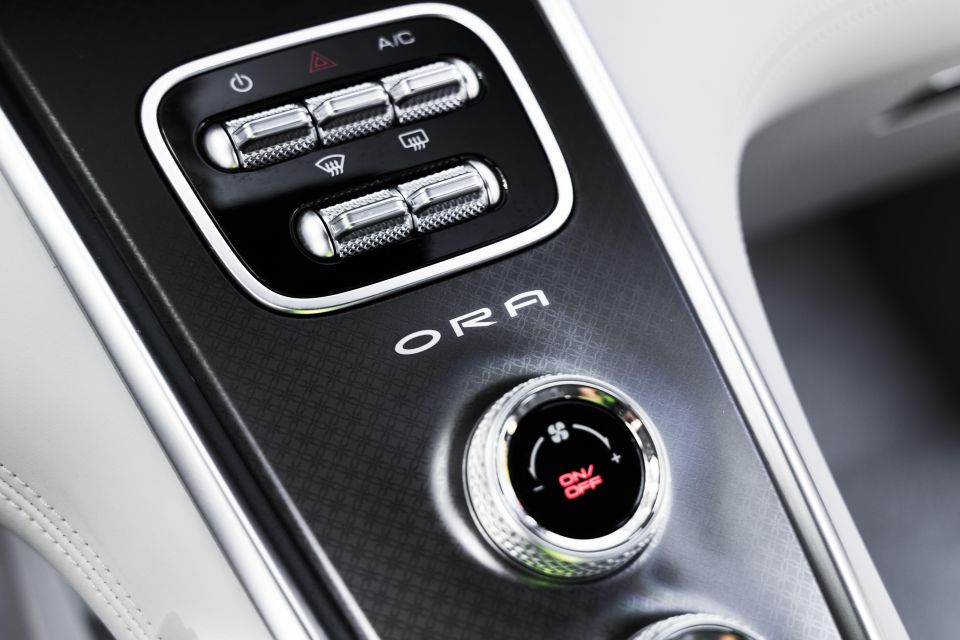
Some of those dramatic design touches are practical, too. Rather than having to dive through fiddly menus to change the fan speed, as is the case in most GWM cars at the moment, you can just use the knurled-effect dial. Give us more of that, please.
There’s also storage beneath the rising central tunnel for a handbag.
Rear seat space is compromised by that dramatic roofline, as you’d expect. Headroom is a bit iffy relative to a Model 3, and legroom is relatively tight behind a taller driver.
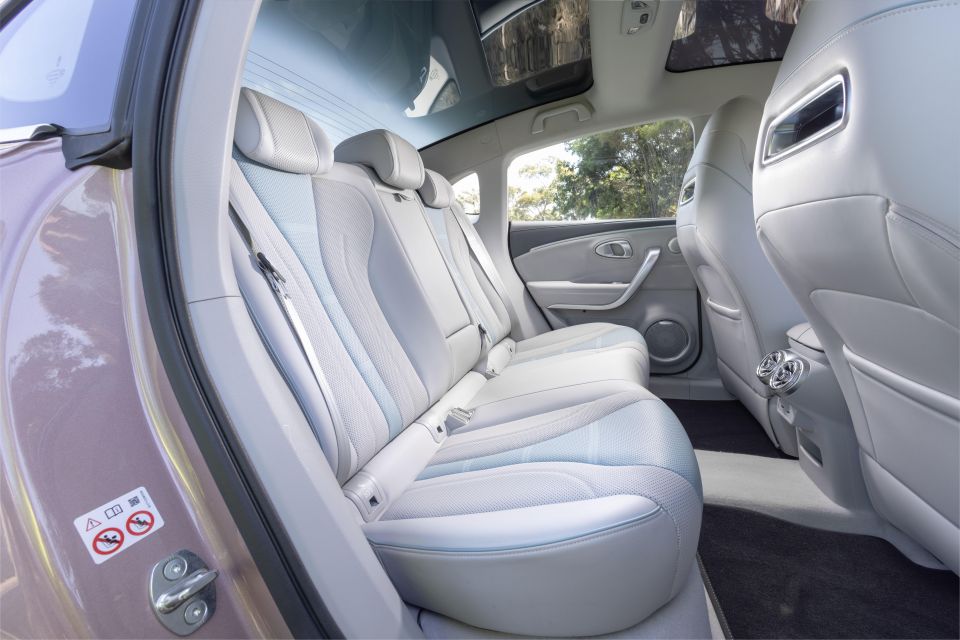
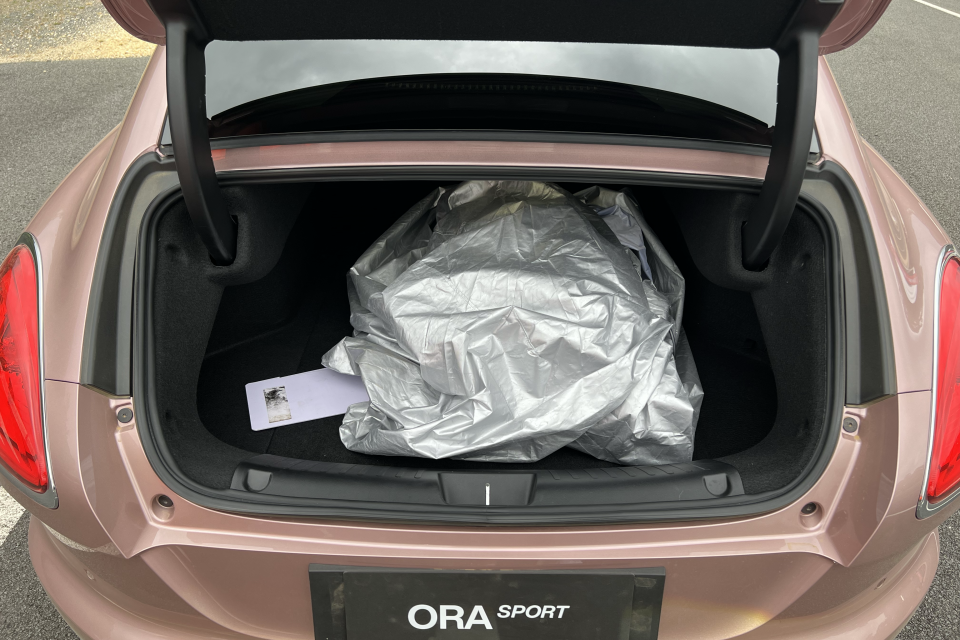
You do get air vents and USB power back there though, and the glass roofline makes for a light, airy cabin.
It’s a similar story with the boot, which has a letterbox opening. It’s not a hatchback (like a Model 3, but not a Polestar 2) which makes it tougher to load big items.
At 4871mm long, 1862m wide, and 1500mm tall, on a 2870mm wheelbase, this isn’t a small car, but some sacrifices have been made in the name of style.
Two variants of the GWM Ora Sport are offered overseas.
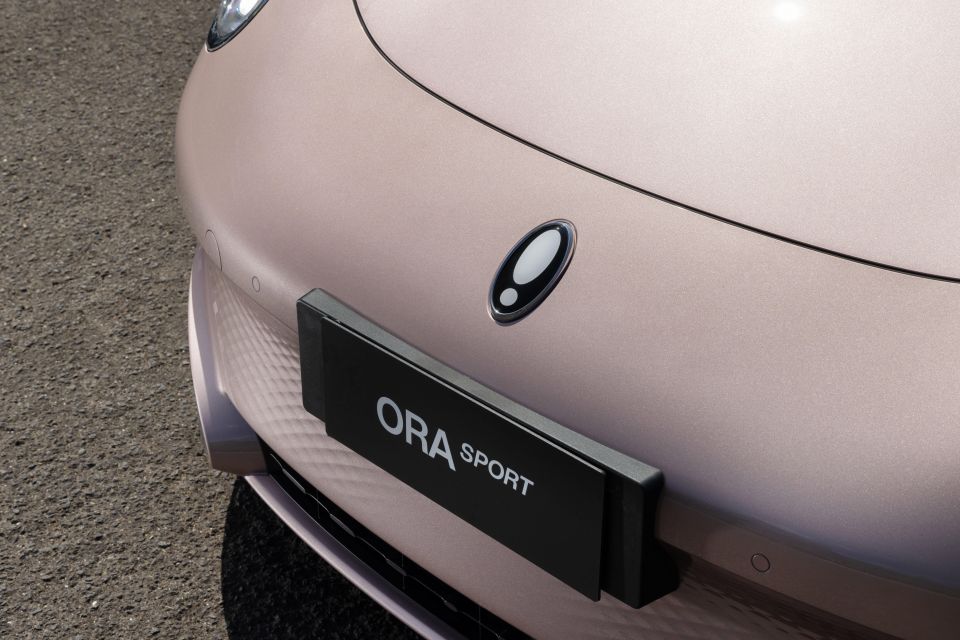
The entry-level vehicle pairs a nickel-manganese-cobalt 63kWh battery pack with a front mounted single-motor powertrain making 150kW of power and 340Nm. Claimed range is 555km on the more lenient NEDC drive cycle.
The range-topper has an 85kWh NMC battery pack, and a dual-motor all-wheel drive powertrain packing 300kW and 680Nm. Claimed range is 705km on the NEDC drive cycle, and the 100km/h sprint takes a claimed 4.3 seconds.
Our quick drive was of the single-motor model, not the dual-motor flagship.
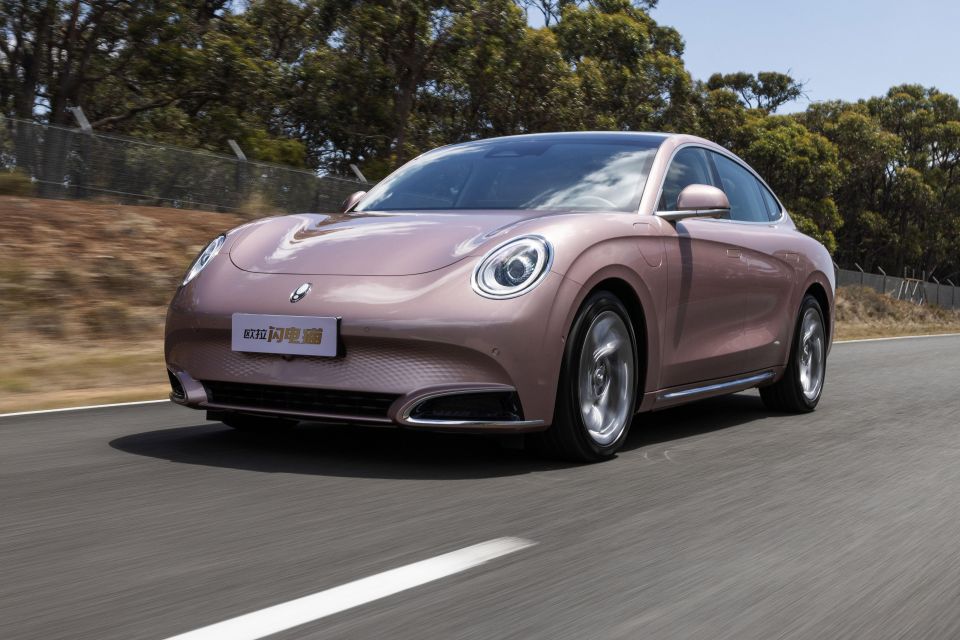
With that in mind, the Ora Sport doesn’t feel overtly sporty. Like the smaller Ora hatch, it has the immediate low-down punch you’d expect of an electric vehicle, and it builds speed smoothly.
It’ll be interesting to drive the dual-motor car, because the single-motor gently presses you back in the seat rather than really squeezing your chest.
Inside, you get fake engine noise played through the speakers that calls to mind a Subaru BRZ or Toyota GR86.

We didn’t have the time to dive through the (Chinese language) menu to see which other options are on offer, but the fact GWM is trying to bring a bit of internal-combustion drama to its EVs will make a band of enthusiasts happy.
Of course, there’ll be plenty of people keen to turn it off as well. That’s more than understandable, given one of the key draw cards associated with going electric is silence.
Compared to the Ora hatch, the Sport feels quite relaxed at highway speeds. There’s a bit of body roll, but that character made the Sport a more comfortable cruiser than its little brother on our short test track.
Also playing into that impression is the light, quick steering.
Given it hasn’t been confirmed for Australia just yet, there’s no indication of what equipment will be standard.
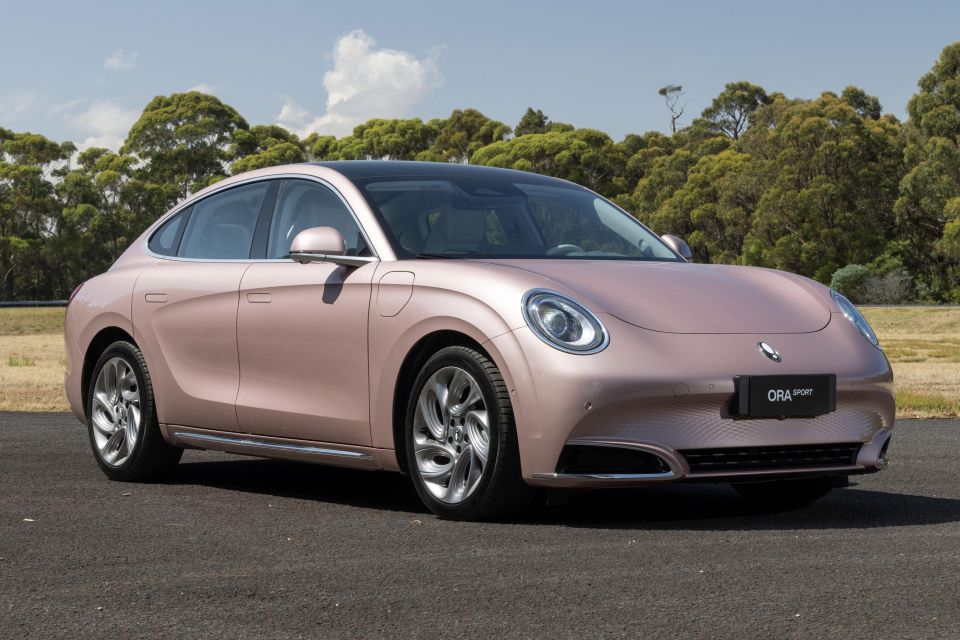

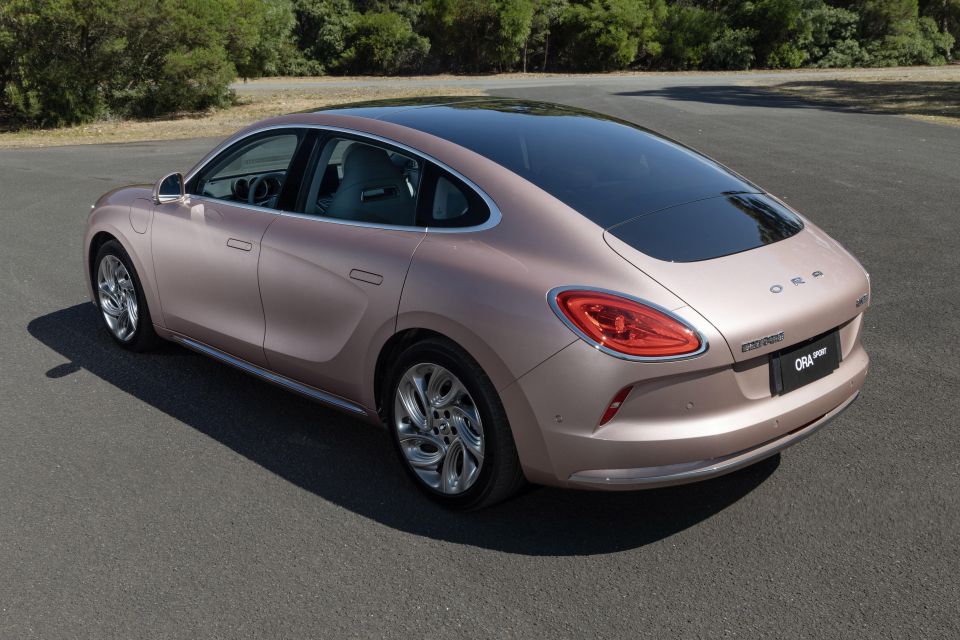
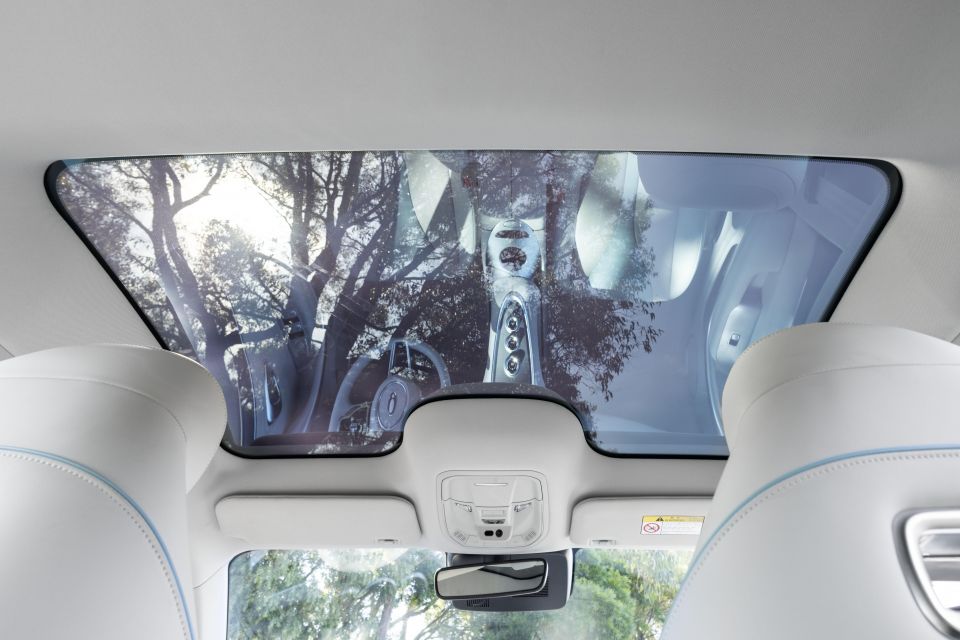
We know GWM will bring both the single- and dual-motor models if it can, but it’s likely both will come loaded with kit like the Ora hatchback.
The car we drove was fitted with:
The Ora Sport hasn’t been crash tested by Euro NCAP or ANCAP.
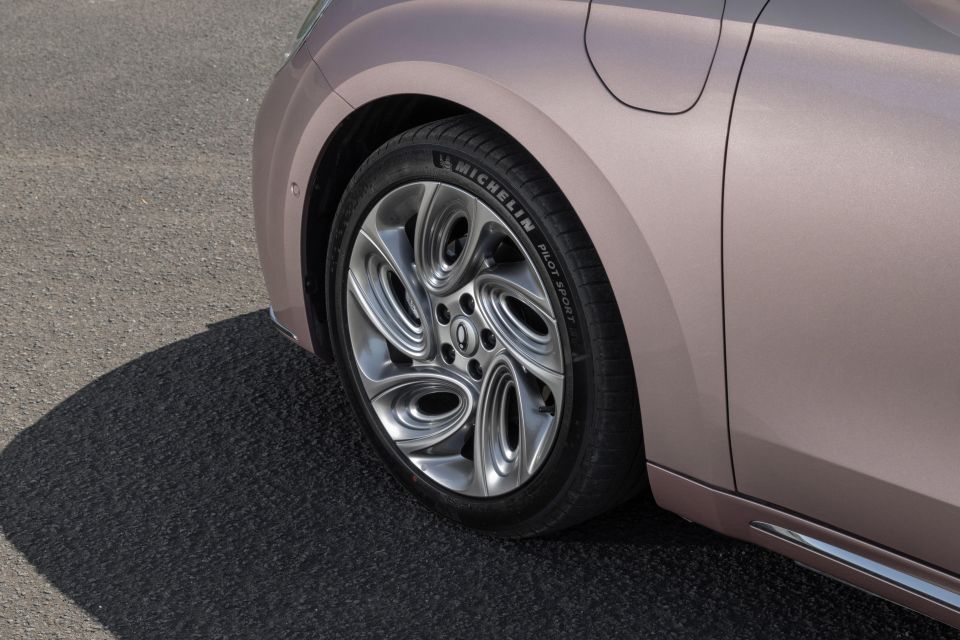
The related Ora hatchback has a five-star safety rating, however.
GWM says the Ora Sport features one front-facing camera, four side-view cameras, four ’round-view’ cameras, five millimetre-wave radars, 12 ultrasound radars, and an in-car driver attention camera to drive its active safety systems.
The GWM Ora Sport will be backed by a seven-year, unlimited-kilometre warranty like the wider range, with the battery covered for eight years.
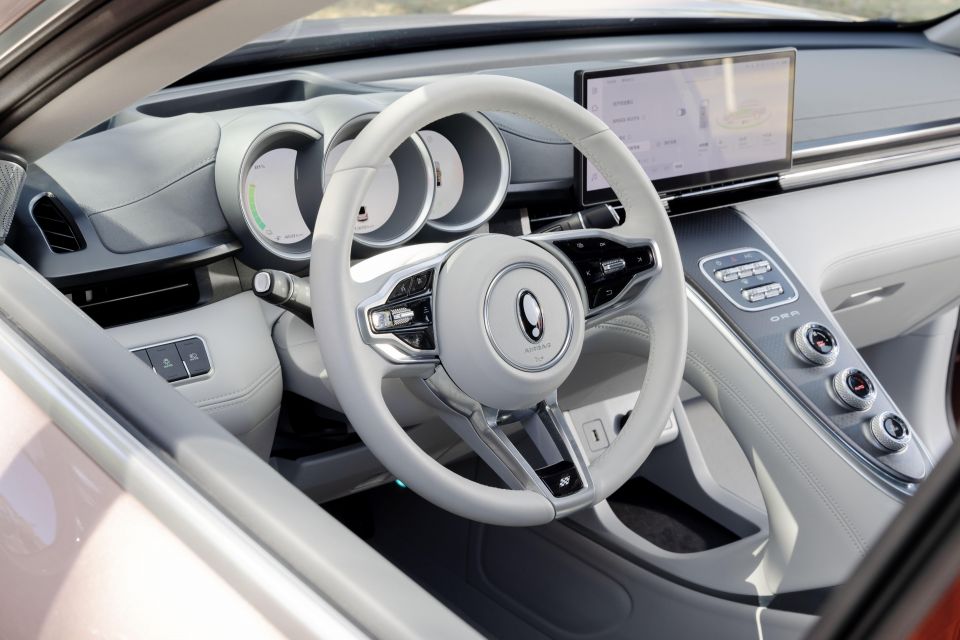
Five years of roadside assist and five years of capped-price servicing are also included with new GWM cars in Australia.
The GWM Ora Sport would be an interesting addition to the Australian electric car market.

Say what you will about the way it looks – from some angles I really like it, from others it’s a bit horrifying – more choices for buyers in a supply-constrained market can only be a good thing.
Also, if you’re sick of same-same designs and derivative cabins, the Ora Sport should be refreshing.
If the price is right, the dual-motor model in particular has an opportunity to draw some buyers away from the Tesla Model 3 Performance and Polestar 2 Dual Motor.
As for how many? That’s harder to predict. But we’re keen to find out.
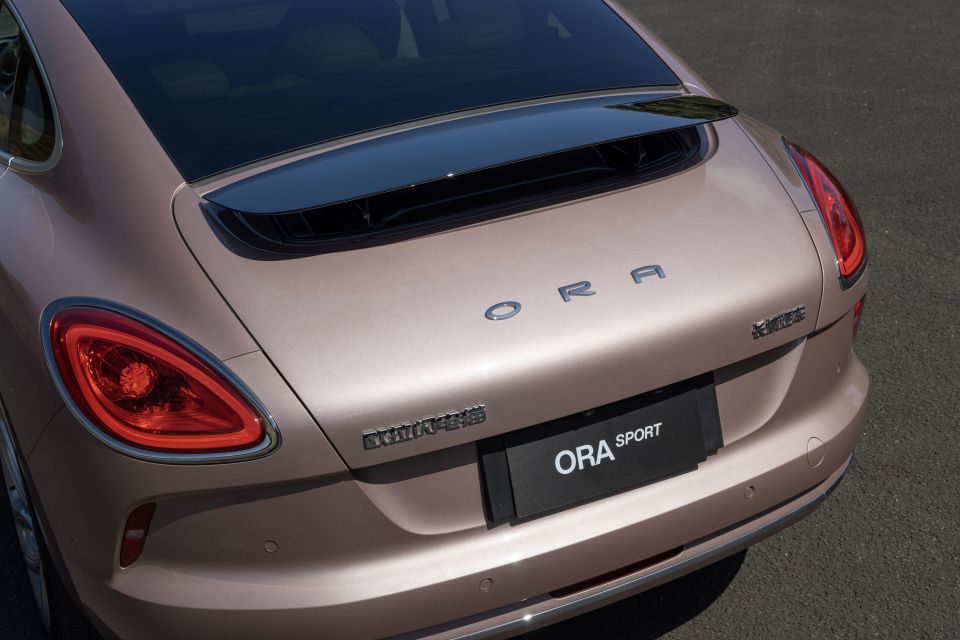
Where expert car reviews meet expert car buying – CarExpert gives you trusted advice, personalised service and real savings on your next new car.
Click the images for the full gallery
MORE: Everything GWM Ora
Where expert car reviews meet expert car buying – CarExpert gives you trusted advice, personalised service and real savings on your next new car.
Scott Collie is an automotive journalist based in Melbourne, Australia. Scott studied journalism at RMIT University and, after a lifelong obsession with everything automotive, started covering the car industry shortly afterwards. He has a passion for travel, and is an avid Melbourne Demons supporter.


Damion Smy
1 Hour Ago


Damion Smy
3 Hours Ago


William Stopford
4 Hours Ago


Matt Campbell
12 Hours Ago


Max Davies
1 Day Ago


William Stopford
1 Day Ago